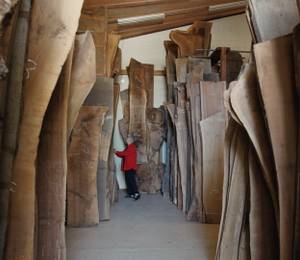Ottawa, Canada – A luminous worship space designed and built with the creative use of computer modeling, measuring, and fabrication software, and custom glass, has won the Royal Architectural Institute of Canada (RAIC) Innovation in Architecture Award for 2017.
The Bahá’í Temple of South America, by Hariri Pontarini Architects of Toronto, is a domed structure set in the foothills of the Andes Mountains outside Santiago, Chile. Nine monumental veils frame an open worship space that expresses a faith of inclusion and accommodates up to 600 visitors.
Fourteen years in the making, it was completed in 2016.
“The successful resolution of a project of such extraordinary ambition establishes a legacy for future projects for the profession,” said the three-member jury.
“The assembly of an international and local team of suppliers, consultants and fabricators demonstrate how the profession is increasingly working in complex, globalized environments that demand a sophisticated use of evolving software, communication and fabrication software tools,” they wrote.
The Innovation in Architecture award recognises exceptional architectural innovation. Potential areas for innovation include research and development, applied use of new technology and adaptation of existing technology. Innovation can also be demonstrated by new project delivery and construction methods, advanced design processes and fresh approaches to details and materials.
The award will be presented at the RAIC/OAA Festival of Architecture, which takes place in Ottawa May 24 to 27, 2017.
The Bahá’í Temple of South America reflects innovations in materials, technology, and structure. For instance, a search for materials that capture light resulted in the development of two cladding materials: an interior layer of translucent marble from Portugal, and an exterior layer of cast-glass panels developed, in collaboration with the Canadian glass artist Jeff Goodman, for this project.
To realise the complex curves of the design, the studio looked beyond the traditional three-dimensional visualization software used by the architectural industry, toward modeling platforms geared to fabrication and manufacturing.
Located in an earthquake zone, the structure was designed to withstand extreme earthquakes and wind. The super-structures of the wings are comprised of thousands of individually engineered steel members and nodal connections. Each of the wings rests on concrete columns on seismic bearings, so that in the event of an earthquake, the building can slide to absorb the shock.
Prefabricated pieces for the structure and cladding were produced in multiple countries using advanced fabrication techniques, then shipped and assembled on site. The steel superstructure, for example, was made in Germany using CNC plasma cutting and 5-axis CNC milling machines.
“I am very pleased to receive this award,” said partner-in-charge Siamak Hariri, FRAIC. “The brief was for a new type of sacred space, a place of worship that is attractive, open, and inviting to people of all faiths or none at all. Innovation was at the heart of the project. The award is a testimony to the deep collaboration of literally hundreds of people.”
The jury:
· Howard Sutcliffe, FRAIC, Principal, Shim-Sutcliffe Architects, Toronto;
· Michael Green, FRAIC, Principal, Michael Green Architecture, Vancouver;
· J. David Bowick, P. Eng., President, Blackwell Structural Engineers, Toronto.












